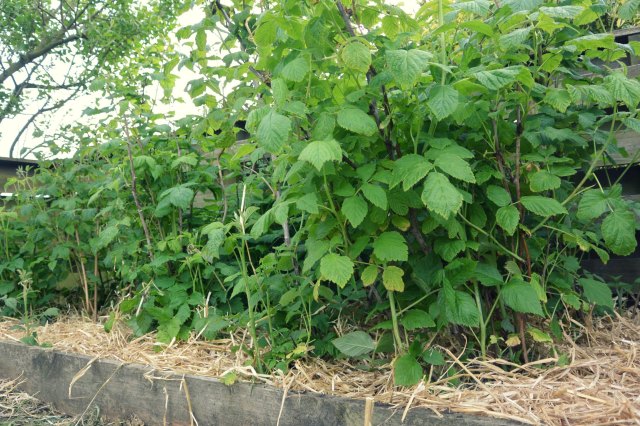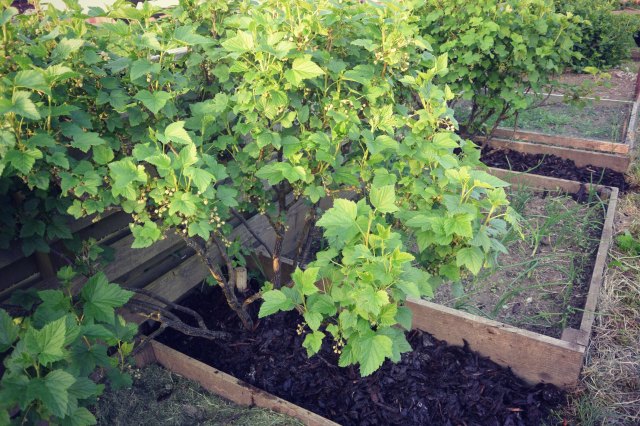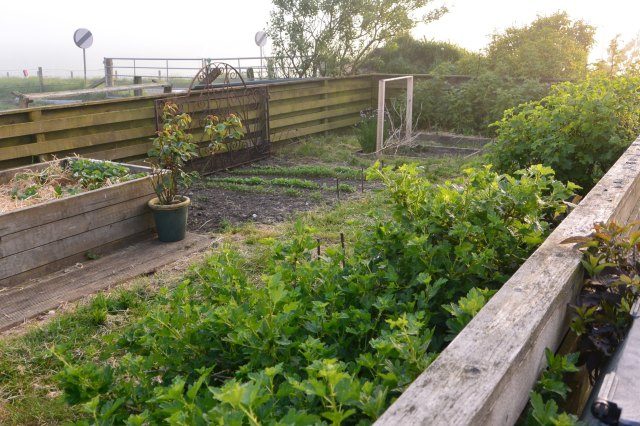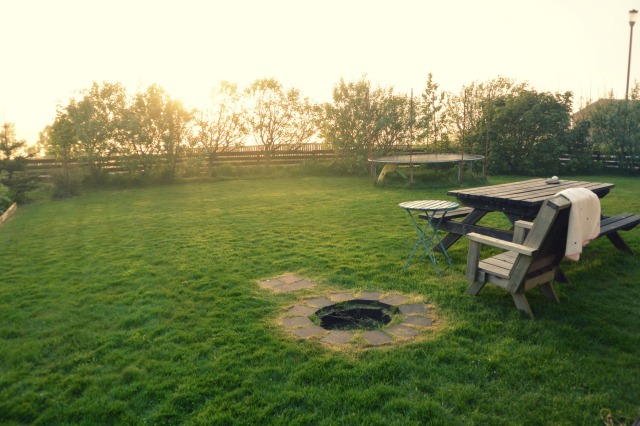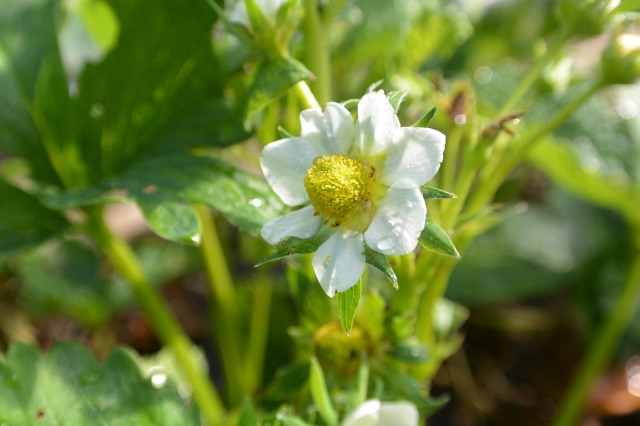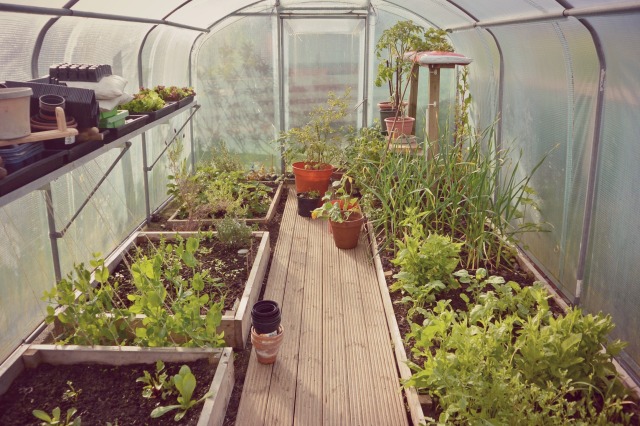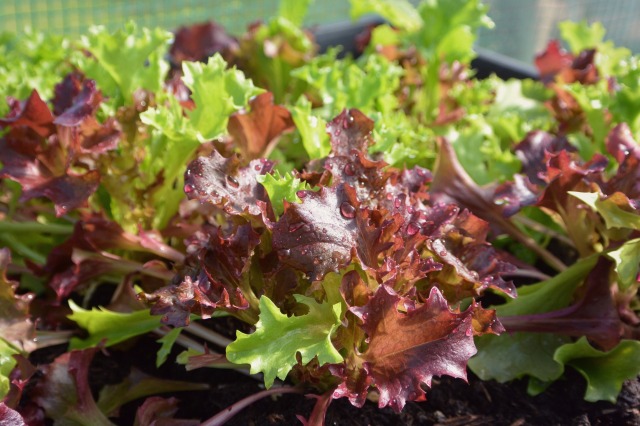Tonight is exactly the sort of night you just don’t want to finish. It is a completely still, sunny night with mist gently rolling in to slowly bring this glorious day to an end. After an hour in the garden (I’m writing this at 9.25pm) the sun is still out but hidden behind a curtain of mist and looking out of the window everything looks golden sort of milky…
Anyway, seated comfortably at the kithen table, listening to Enigma and sipping a refreshing cup of Earl Grey with lemon I’m just going to write briefly about tonight’s tasks in the garden. Before I start let me say that this year I decided to be orgaised and keep on top of weeding by spending a little time in the garden every day, even if the weather isn’t good. This should make everything much easier and I shouldn’t be faced with weeding through a jungle every so often which can be a very daunting task.
So the start to this resolution tonight’s tasks were weeding around the raspberry canes, red and black currant bushes and strawberries, putting some fruit fertiliser down and mulching around the bushes with bark and straw.
Raspberry canes mulched with straw – this should help to supress the weeds and keep moisture in.
Black currant berries to be…
These gooseberries turn dark red when they are ripe and taste like honey. Can’t wait for them and just love the feeling when they burst in your mouth…
After pruning the black and red currant, I put some organic fruit fertiliser down and mulched around the bushes with bark. The bushes look really lovely and happy now.
Strawberries with fresh bed of straw.
Supervised by the neighbour in the park next door… we even use grass clippings to mulch around tatties which saves having to earth them up and keeps those pesky weeds out.
The perfect night for weeding and actually enjoying the garden.
Beautiful chives flowers about to open – they lovely in the house too, instead of expensive cut flowers.
In the polytunnel – hoping for some beetroots this year as last year the crop wasn’t great…
Delicious, sweet-tasting peas time soon!
And after all this enjoyment, fresh air and sunshine it is time to turn in, make a cup of tea and relax.
